Research and Development Menu (Tap to display menu)
Osaka Medical University Public Lecture
February 7, 2004: Announcement of the Public Symposium on Electromagnetic Interference with Cardiac Pacemakers
● February 7, 2004: Keynote Speech of the Public Symposium on Electromagnetic Interference with Cardiac Pacemakers
■ Electromagnetic Interference in Cardiac Pacemakers
- Medtronic Japan Co., Ltd.
- Cardiac Rhythm Management Technical Fellow
- Ken Toyoshima

Since public announcements about electromagnetic interference from mobile phones began appearing in trains and other places, implantable cardiac devices such as pacemakers and ICDs (collectively referred to as "pacemakers/ICDs") have become familiar to the public. These devices detect cardiac potentials generated by heart activity and control their function accordingly. When external electromagnetic fields introduce electrical noise into these devices, it can impair their proper operation, a phenomenon referred to as Electromagnetic Interference (EMI).
Although pacemakers are sometimes criticized as overly sensitive to external noise, this is inaccurate. Devices that handle biological signals like pacemakers/ICDs are rare outside hospital environments. Some devices may even be affected by mobile phones more than a meter away, suggesting that hospital equipment can be influenced through walls. Hence, phone use is strictly restricted in hospitals. In comparison, pacemakers/ICDs, which are unaffected if the distance is more than 22 cm, are considered relatively robust against noise.
The root cause of these vulnerabilities is not the devices themselves but rather that electromagnetic fields affect the biological environment, leading to noise-contaminated signals reaching the devices. Because natural ECG signals are very weak (typically around 20mV), even modest noise can disrupt them. Preventing this requires shielding the body from external fields.
This explains why simply bringing a pacemaker system into a test environment does not provide an accurate evaluation unless the system is embedded in a human-equivalent model.
This lecture discusses how noise is introduced into pacemakers/ICDs, the design of human models for electromagnetic testing, and findings from research commissioned by the Ministry of Internal Affairs and Communications. It will also identify specific devices users should be cautious of and offer practical advice on avoiding EMI in daily life.
● February 7, 2004 - Symposium on Electromagnetic Interference in Cardiac Pacemakers - Lecture 1
■ How do pacemaker patients feel about electromagnetic waves?
―From a survey on awareness of electromagnetic interference among cardiac pacemaker patients―
- Osaka Medical College, Department of Thoracic Surgery
- Taisei Morimoto

Since the advent of demand-type pacemakers, which operate based on the presence or absence of intrinsic heartbeats, it has become evident that external electromagnetic waves can interfere with pacemaker function. This phenomenon is known as electromagnetic interference (EMI). As a result, devices that affect pacemaker function have been identified, and patients have been warned. However, with the rapid spread of mobile phones, reports from Europe have shown that they can interfere with pacemakers, causing concern among patients. Although guidelines for the safe use of mobile phones around pacemakers have been issued, many patients still express anxiety. In addition, other household appliances such as EAS systems and induction cookers (IH) have also emerged as potential sources of EMI.
To understand patients' perceptions of electromagnetic waves, we conducted a survey between November 1, 2003, and January 20, 2004, of 215 patients (125 men, 90 women, aged 20–94, average age 64.1) who visited the pacemaker outpatient clinic at our department for routine check-ups.
The results showed that 95% (204 patients) were aware that electromagnetic waves could affect pacemakers. Of those, 47% (101 patients) knew the specific effects, with 55% (56 patients) citing malfunction. About 70% obtained information from doctors or nurses. While 93% (199 patients) knew about the safe distance from mobile phones, only 30 correctly answered “22 cm.” About 30% (63 patients) used mobile phones, but none reported experiencing interference. Regarding induction cookers, about 30% expressed a desire to use them, and surprisingly, 2 were already using them. Meanwhile, 15% (32 patients) stated they were afraid to go outside due to electromagnetic waves, with 16 describing themselves as reclusive. Two patients (arc welders) had to change jobs due to workplace EMI. Many respondents wished for improvements in pacemaker shielding and highlighted the need for better etiquette among mobile phone users.
In conclusion, accurate communication about EMI risks is lacking. As most patients rely on information from medical professionals, it is imperative for those involved in pacemaker care to acquire and convey accurate information. Collaboration with home appliance manufacturers, EMI-related businesses, and researchers is essential to addressing these concerns together.
● February 7, 2004 - Symposium on Electromagnetic Interference in Cardiac Pacemakers - Lecture 2
■ What kinds of malfunctions can pacemakers experience due to electromagnetic waves?
―Types of electromagnetic malfunctions in pacemakers and their effects―
- Osaka Medical College, Department of Thoracic Surgery
- Tomohiro Tokumaru
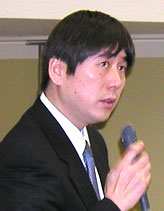
In recent years, various sources of electromagnetic interference (mobile phones, induction cookers, anti-theft systems, etc.) have become more prevalent. While experimental studies and improvements in pacemaker design have helped clarify their effects and reduce risks, emerging sources of EMI remain a concern. Additionally, patients' anxiety—often fueled by media reports and public announcements—appears to be growing. We, too, have observed various effects on pacemaker patients in our facility.
Despite many patients reporting symptoms after perceived EMI exposure (e.g., mobile phone use nearby), actual interference cases are rare—most are psychological. Conversely, some patients unknowingly experienced EMI-related effects without symptoms, discovered only during clinic visits. These experiences underscore the need not only to identify harmful EMI sources but also to help patients and those around them understand why interference happens and how to respond appropriately. This lecture explains how pacemakers operate and the types of malfunctions caused by EMI.
1) Basic Operation of a Pacemaker
In 1903, Einthoven recorded that the heart emits electricity during contraction—now known as the electrocardiogram (ECG). Pacemakers detect this electrical activity through leads placed in the heart. When the heart contracts, the pacemaker recognizes it and does not activate. If no contraction is detected for a certain period, the pacemaker sends electrical signals to stimulate contraction. This is the fundamental principle of operation.
2) Types of Pacemaker Malfunctions Due to Electromagnetic Interference (Three Major Categories)
1: Pacemaker function relies on “sensing” and “stimulating.” The leads connecting the pacemaker to the heart can pick up unintended electrical signals when exposed to electromagnetic waves (Lorentz's law). The pacemaker may mistakenly interpret these as natural heart contractions, cease stimulation, and cause a pause in heartbeats if no intrinsic rhythm exists—resulting in potential cardiac arrest.
2: Pacemakers are designed to respond to magnets by initiating a specific safety mode (forced stimulation). This feature is useful in emergencies or remote areas lacking specialized equipment. However, it may also be triggered unintentionally by magnetic therapy devices or strong electromagnetic fields, and—albeit rarely—cause dangerous arrhythmias if the pacing overlaps with natural heartbeats.
3: Although pacemakers are robust, they are still precision instruments. Very strong electromagnetic energy (e.g., from radiation therapy or large-scale industrial power sources like nuclear plants) can damage the device or reduce it to minimal functionality—or even halt it entirely.
In conclusion, while malfunctions caused by EMI are serious, there have been no recorded fatalities globally. This important fact should be noted.
● February 7, 2004 - Symposium on Electromagnetic Interference in Cardiac Pacemakers - Lecture 3
■ What exactly are electromagnetic waves?
―Understanding the nature of electromagnetic waves―
- Professor Emeritus, Kinki University
- Tadao Okamoto

1. In the Beginning Were Magnetic Field Lines
Michael Faraday observed how iron filings aligned around a bar magnet and conceptualized “magnetic field lines.” He proposed that magnets generate a field filled with these lines, through which forces like attraction and repulsion are transmitted. This is called a magnetic field. When a current flows through a wire connected to a battery, a magnetic field also forms around the wire. Fields formed by magnets or electric currents are called static magnetic fields. Similarly, static electric fields form between positive and negative charges (e.g., via static electricity or batteries) and are characterized by “electric field lines.”
2. Magnetic Fields Generate Electric Fields and Vice Versa
When a bar magnet is moved near a wire coil, it induces an electric current. Moving it away reverses the current. James Clerk Maxwell interpreted this as: a time-varying magnetic field induces a time-varying electric field. Likewise, applying AC voltage to two facing plates (even with a break in the circuit) causes current to flow, explained by the presence of a time-varying electric field between the plates. Maxwell concluded that such electric fields also generate time-varying magnetic fields. These phenomena are now considered fundamental properties of space.
Since changing magnetic and electric fields are interdependent and inseparable, they are considered a unified entity: the electromagnetic field. Maxwell mathematically described this interaction, leading to the formulation of electromagnetic field equations. These equations predicted electromagnetic waves, which propagate at nearly the speed of light. Twenty-five years later, German physicist Heinrich Hertz artificially generated and detected these waves, confirming that light itself is a form of electromagnetic wave.
3. Classification of Electromagnetic Fields by Frequency and Wavelength
4. Electromagnetic Fields Reflect and Penetrate
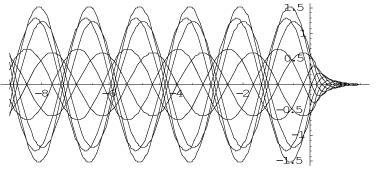
5. Electromagnetic Fields Can Diffract
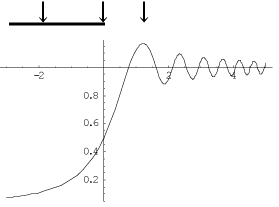
Electromagnetic Wave Spectrum
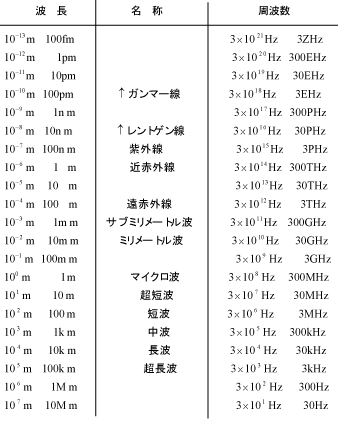
● February 7, 2004 - Symposium on Electromagnetic Interference in Cardiac Pacemakers - Lecture 4
■ What kinds of devices can affect pacemakers?
―Investigating the impact of electromagnetic waves emitted by devices on pacemakers―
- Osaka Prefectural Research Institute of Industrial Technology
- System Technology Department, Electronic Measurement Group
- Kenichiro Tanaka
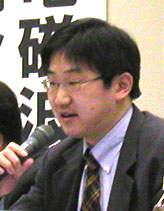
When electromagnetic waves enter a pacemaker and certain conditions align, it may interfere with the device's operation. There are two known paths through which electromagnetic waves can enter a pacemaker.
The first is through the leads (electrodes) that deliver electrical stimulation to the myocardium and monitor the heartbeat. Modern pacemakers are mostly demand-type, stimulating the heart only when a slow pulse is detected. In these devices, electromagnetic waves entering via the leads can disrupt pulse monitoring, causing the device to either fail to stimulate when needed or stimulate inappropriately when not needed.
The second entry path is the telemetry coil built into the pacemaker. This component enables data communication between the pacemaker and an external device via magnetic signals applied through the skin. Because pacemakers have entry points for electric and magnetic signals, it is impossible to completely shield them from electromagnetic interference. Whether interference occurs depends on factors such as wave strength, frequency components, amplitude fluctuations, pacemaker model, and individual patient settings. Therefore, we configured various pacemakers under the most susceptible conditions and placed them inside a human-body phantom to experimentally test the effects of devices suspected to cause interference, such as a 2 kW IH cooker, walk-through metal detectors, and automatic mahjong tables.
The results showed that interference occurred when the pacemaker was placed very close to the IH cooker or automatic mahjong table. For the metal detector, interference was only observed at maximum output levels (not typical for practical use) and when the pacemaker was positioned directly next to the device.
In this presentation, we explain the mechanisms by which artificial systems generate electromagnetic interference affecting pacemakers, describe the human-body simulation model used for testing, and share our experimental findings.
● February 7, 2004 - Symposium on Electromagnetic Interference in Cardiac Pacemakers - Lecture 5
■ How can the effects of electromagnetic waves be reduced?
―Methods to mitigate electromagnetic interference on pacemakers―
- Osaka Prefectural Research Institute of Industrial Technology
- System Technology Department, Electronic Measurement Group
- Genichi Matsumoto

Electromagnetic waves are phenomena where temporal changes in electric and magnetic fields propagate through space. When these waves strike conductive materials, they induce voltage and current. Since pacemakers are made of conductive materials, they can also experience induced voltage and current when exposed to electromagnetic waves.
The role of a pacemaker is to detect small voltages generated by the heart's muscle (myocardium) and regulate heartbeats by delivering electrical stimuli when necessary. However, external electromagnetic waves may create voltages indistinguishable from those of the myocardium, disrupting normal function.
Three known methods can reduce electromagnetic interference: 1) Eliminate the source of electromagnetic waves, 2) Strengthen internal shielding in the pacemaker, 3) Block the transmission path. Of these, only the third is feasible for pacemaker users. The simplest way is to stay away from the interference source, but this may not always be practical in daily life. An alternative is to shield the body surface with materials that block electromagnetic waves.
There are various electromagnetic shielding materials, including clothing made from conductive fibers. In this study, we placed pacemakers in life-sized half-body models representing the average Japanese physique, dressed them in electromagnetic shielding garments, and exposed them to strong external electromagnetic waves to observe the effects.
The electromagnetic waves used covered frequency ranges emitted by IH cookers, weapon detectors, anti-theft systems, contactless data carriers (e.g., SUICA, ICOCA, RF-ID), specific low-power radios, amateur radios, car phones, mobile phones, wireless LAN, engine spark plugs, arc welders, etc., using a high-power impulse signal with a peak of 4kV and a frequency range of 20 Hz to approximately 1 GHz.
The results confirmed that with the shielding garment applied, the pacemaker functioned normally under all test conditions.

